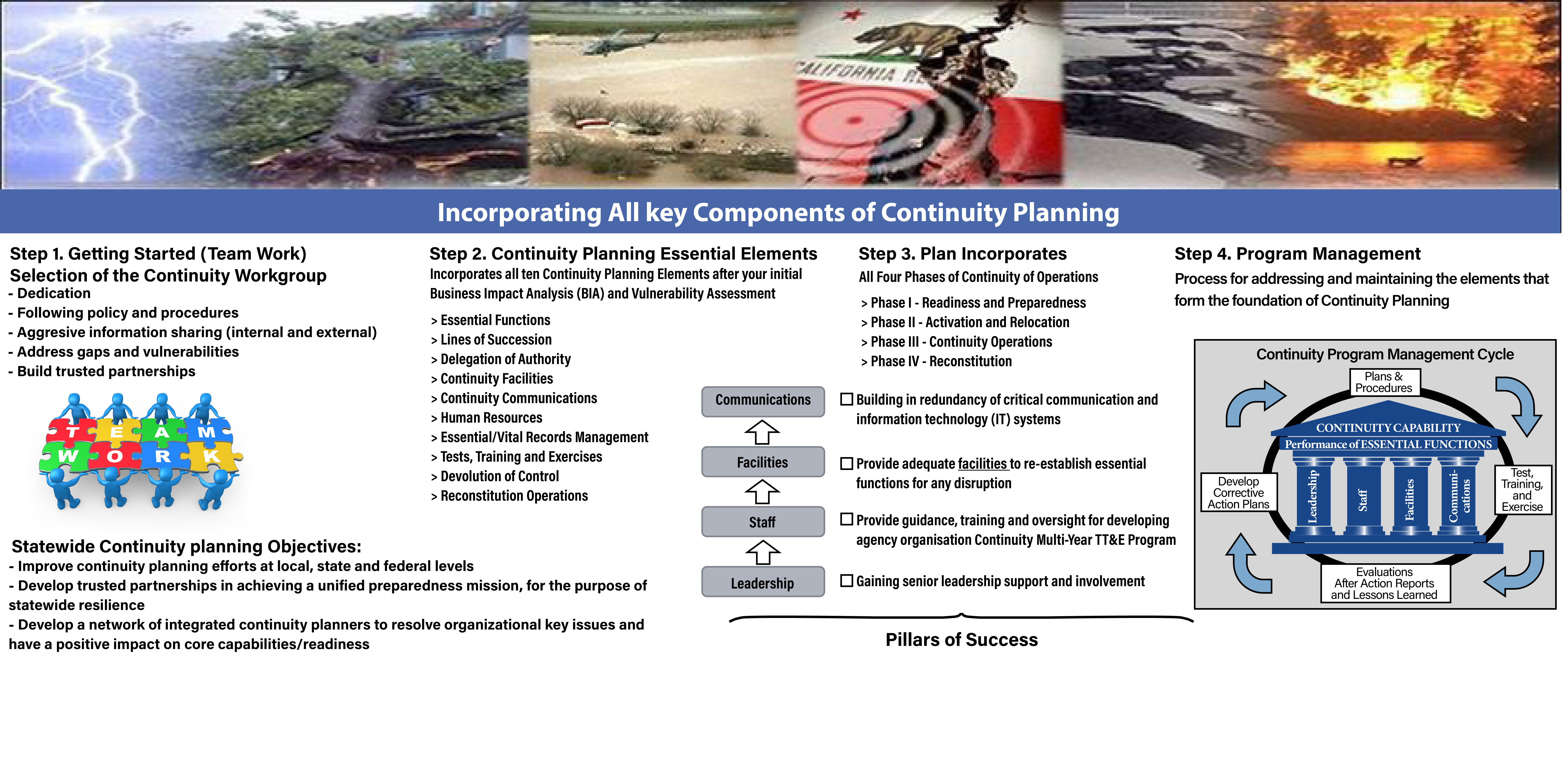
Disaster Management Manual
A manual for practitioners and decision makers!

Disaster Management Manual
A manual for practitioners and decision makers!
Natural disaster management starts from detection of phenomena which may cause damage to roads or road transportation. There are suitable ways and methods of detection for each kind of disaster. Monitoring is often applied in the case of where disaster occurs is identified or limited to a narrow area and occurrence of disaster depends on environmental conditions. When occurrence of disaster does not depend on the location or environmental condition of the place, it effectively leads increase of robustness of road network by analyzing vulnerability of road network under effects of disaster. In this section, we introduce three case-studies: Monitoring for rock-falls along a national highway in Austria, vulnerability analysis for earthquakes and wildfires in the USA and for landslides in the Czech Republic. 1
A Continuity of Operations Plan (COOP) that contains a transportation agencies’ continuity program can also be used to manage disasters. This plan can be activated in response to a wide range of events or situations - from a fire in a building; to a natural disaster; to a threat or occurrence of a terrorist attack; to a cyber attack; or to a worldwide pandemic. ‘Any event that makes it impossible for employees to work in their regular facility could result in the activation of the continuity plan.’ Having a continuity plan in place is a resilient action. The following figure 1.3 shows the key components of continuity planning. 2
